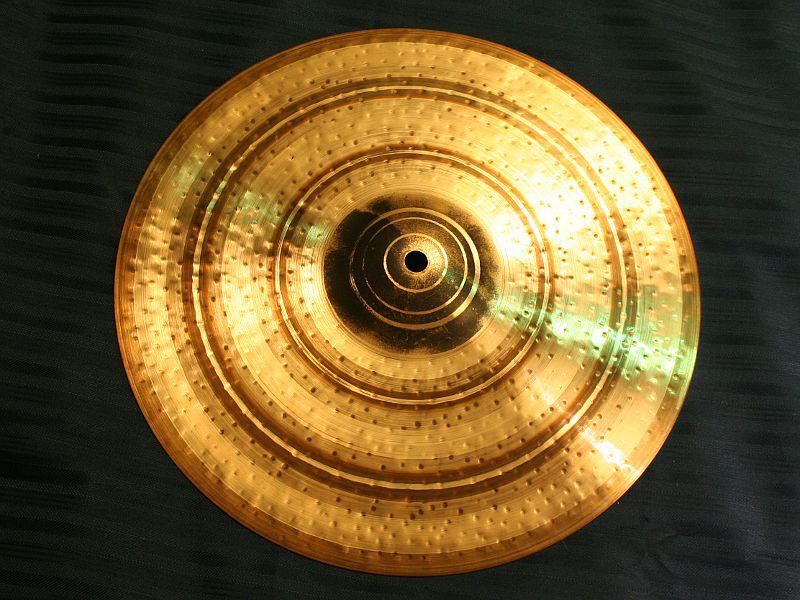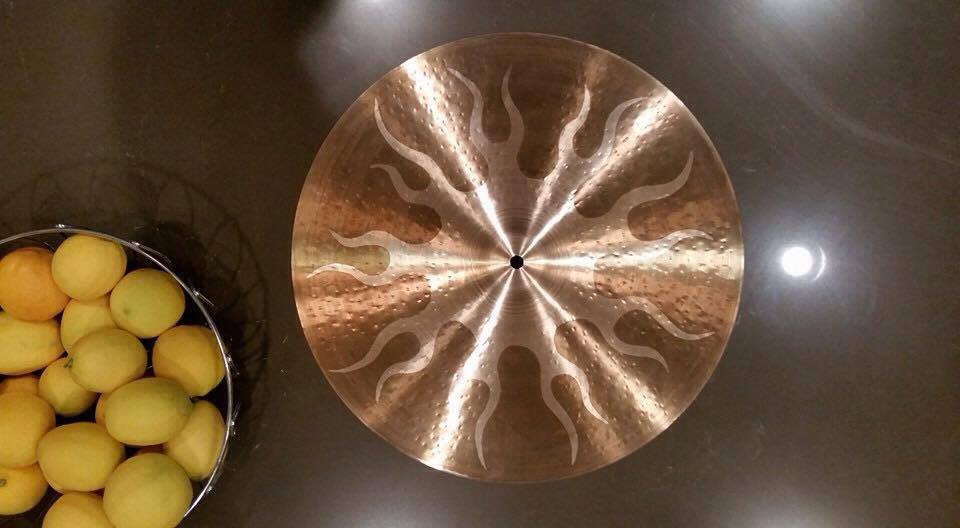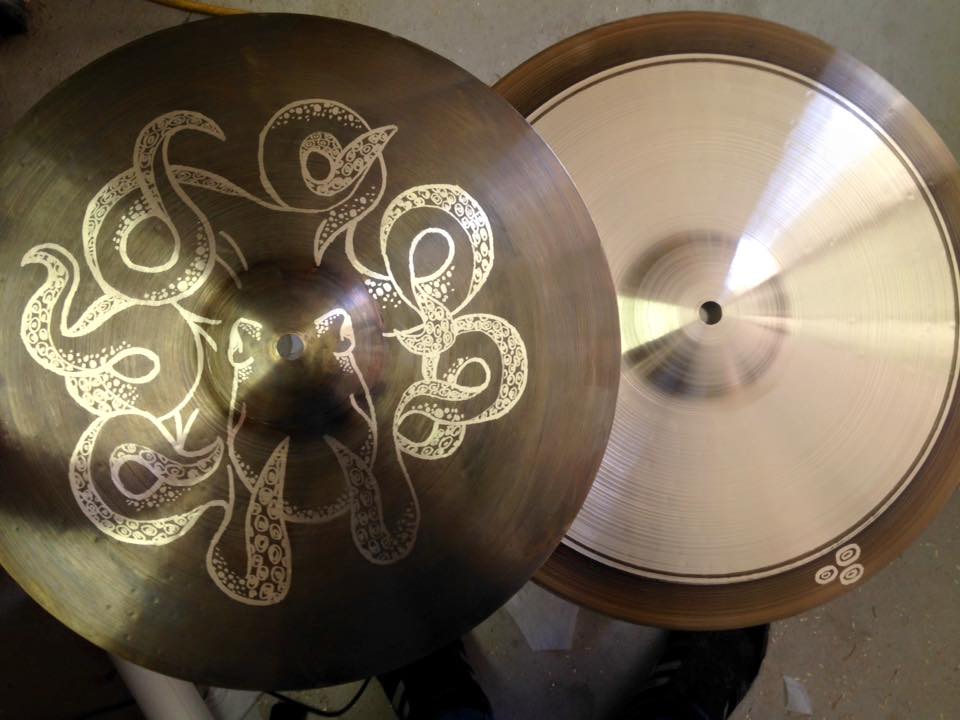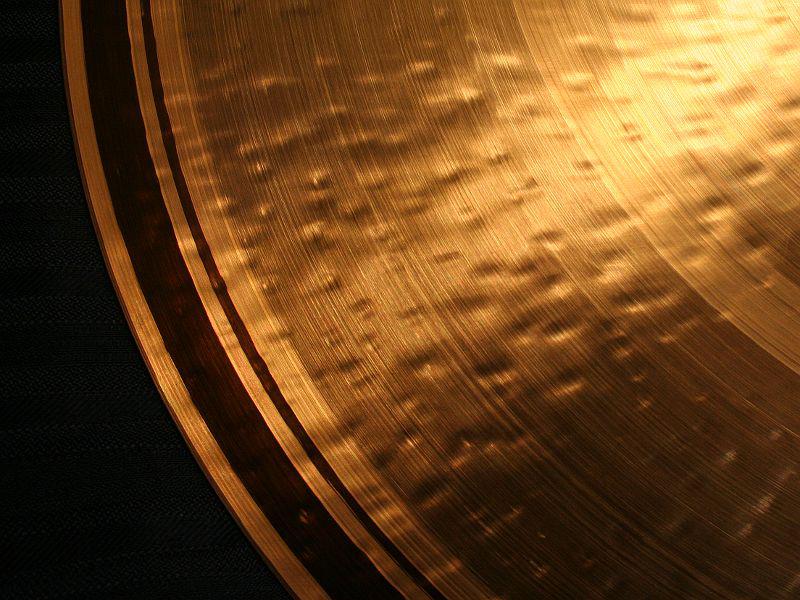By Max Mclaughlin
Photos courtesy of Heather Stine and Gene Hunter
Heather Stine is an independent cymbal-smith from Simi Valley, California. Working under the name “37 Cymbals”, she hammers and lathes blanks of B20 bronze by hand into versatile yet distinctive instruments noted for their sonic and visual appeal. As one of the few individuals left in the US specializing in hand-hammered cymbals, her work is both a lifeline to an ancient trade endangered by the dominance of mass production and an invaluable resource to drummers looking for a unique, signature sound and feel in their cymbals. For more information on Heather and her work, please visit 37 Cymbals at facebook.com/37cymbals.
How did you get into cymbal making? It seems like a very specific, niche based craft.
The way I got into cymbal making was by chance. I volunteer with a food share and happened to meet Matt Bettis, who showed an interest in teaching me. I took him up on the offer once I learned that I would be the only female. I also have always had a love for metal.

How long did it take before you made your first cymbal by hand, and how long have you been making cymbals altogether at this point?
I’m almost certain that I started making my first cymbal the first time I was in Matt’s shop, but if not, it was soon after. It was a 16 (inch) and sold very well. I’ve been making cymbals since 2010.
B20 bronze appears to be the predominant choice of alloy in cymbal making. Have you ever experimented with any others?
Yes, B20 is the most popular. I’ve worked with every other type of bronze generally used for cymbals, as well as some other random metals to see what would happen.
Do you have an ideal sound in your head for every cymbal that you make? When do you know that a cymbal is truly finished? Is it an instinctive feeling?
I aim for jazzier cymbals as far as the ideal sound I’m looking for. There comes a point where a cymbal will tell you that you can’t do anything else to it and it’s good to stop before that point. It takes a bit to find where it becomes an instinct but then it usually is pretty obvious.

Can you explain what kind of tools and machinery that you use to make cymbals by hand?
The main things used for cymbal making are an anvil, generally sitting on a stump, a lathe to thin down the cymbal and add tonal grooves, and various weights of ball peen hammers. There are also supporting tools such as a grinder to sharpen the lathe bits.
Do you have any influences when it comes to crafting cymbals? In your opinion, who is the greatest cymbal-maker of all time?
Matt Bettis will always be a major influence on my work. Without his expertise, I wouldn’t be doing what I do. Though I have to say without a doubt that Roberto Spizzichino is the greatest.
What makes your cymbals stand out from the mass produced ones on the market? Do you feel that there’s an overall lack in sound quality to cymbals made predominantly by machines? What is your goal as someone who is making cymbals by hand?
I think my cymbals stand out from the mass produced ones by the artwork I put on them, as well as a purely handmade tone quality that a machine produced cymbal can’t provide. My goal is to not falter from that and to take pride in providing something unique every time.

Do you specialize in repairs and alterations as well? What kind of work goes into bringing an old, lifeless or damaged cymbal back to brilliance? Is there a point where they can’t be saved?
Yes, I do also modify cymbals. I feel as though there is more thought that goes into a modification as you don’t have a clean slate to start with. Unfortunately, not every cymbal is salvageable but that is rare.


